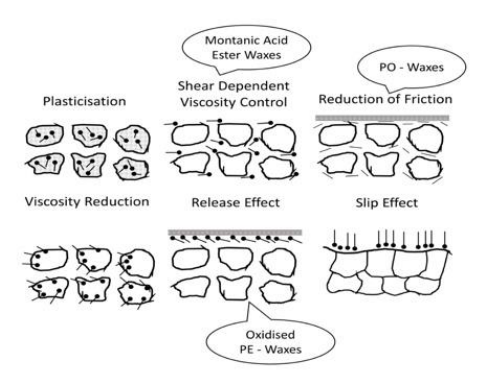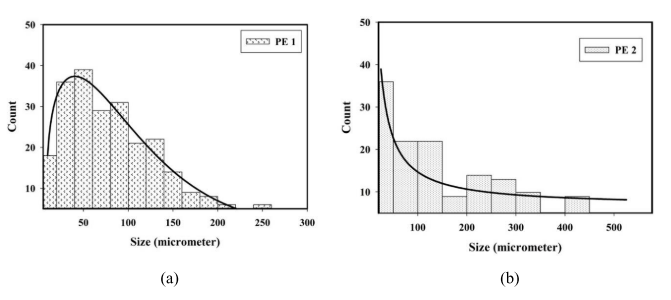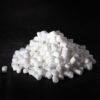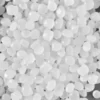Characteristics of lubricating polyethylene waxes [1]
When the lubricant is used in the right way, the process becomes easy. Hence, reducing the viscosity and gelling behavior/releasing effect of lubricants contributes to the speed and quality of production.
Lubricants are widely used in many industrial applications to increase the overall rate of material processing, control or reduce friction in industrial equipment, among other things. Among its uses in various industrial applications, lubricants are used in thermoplastic polymer processes and mainly act to improve surface release properties and/or increase overall process speed. Lubricants are mixed with polymers to modify the apparent viscosity of the polymer melt, and it has been reported that lubricants, when incorporated in small amounts into a polymer, cause a significant increase in the motion of the polymer chains during extrusion, injection molding, and injection molding. they do. Molding, compression molding, etc., without affecting the properties of the polymer. In general, lubricants act internally and/or externally: in polymer processing, they function internally by lubricating the polymer being processed to increase the free flow of the bulk polymer melt by reducing friction between chain segments and externally by Preventing polymers that have a tendency to stick to the metal parts of the process equipment. Figure 1 is a typical example of how lubricants work in poly(vinyl chloride) (PVC), a common polymer that requires the use of lubricant additives during processing.

Figure 1. How lubricants work in PVC
In other words, lubricants help the polymer process by reducing viscosity and gel/release behavior. These lubricants with high polarity and short C chain have the ability to penetrate polymer particles and reduce friction. Polyethylene wax (PE) is a combination of non-polar polymers used in various industrial applications and has wax-like properties containing hydrocarbons between C20 and C50. or higher Polyethylene waxes are important materials and have been reported to be synthesized in several ways: direct polymerization of ethylene under defined conditions, separation of high molecular weight polyethylene into lower molecular weight fractions, and separation of polyethylene fractions. low molecular weight from high molecular weight fractions.
Polyethylene waxes are commercially used in a variety of plastic/polymer process applications due to their unique physical and chemical properties, such as high crystallinity and linearity, low solubility in solvents, hardness at high temperatures, and the ability to thicken oil. become They increase the lubricity, control setting/softening point of hot melt adhesives and are widely used as a lubricant additive in lubricating oils and coatings, providing lubrication and/or physical modification in many applications. Formulations change viscosity and performance. / or melting point and they are also used to affect altered chemical properties such as viscosity, temperature, gloss and fusion rate. Reports show that the use of polyethylene waxes as lubricants provides internal and external lubrication due to reduced friction, and rubber industry, wiring and electrotechnical industry, PVC process, spreading agent for the main category. Paint, carpet production, printing ink production, paint, varnish and textile industry. Types of paraffin and bitumen, fertilizer production, hydrophobic treatment of wooden surfaces, etc. show that it is used in many industrial applications. It has been reported that polyethylene waxes have self-lubricating properties and can provide lubrication and resistance. Provide primary wear resistance in water-lubricated behavioral materials.
Spherical wax particles can be obtained by spray freezing, dropping the molten wax into a cold ultrasonic bath, emulsifying the melt and granulating in a high-speed granulator. All of them are effective process that have been used before. Among them, melt emulsification is a well-defined method for the production of paraffin waxes, PE and PP, and well explains the droplet separation in dependence on the viscosity of the dispersed phase, as seen in Figure 2. Viscosity, time, temperature and rotor speed were listed as the main parameters.

Figure 2. Dependence of droplet breakage on dispersed viscosity

Figure 3. Particle size distribution a. PE 1 and b. PE 2
With decreasing temperature, it has been reported that the dispersion viscosity increases, the amount of fine droplets increases and the size of the formed droplets decreases because the result of droplet distribution is significantly dependent on one of the rheological behavior of the dispersion phase viscosity. Therefore, it can be concluded that PE1 and PE2 are produced in different viscosity ranges according to the main idea in Figure 2 and the particle size distribution results as seen in Figure 3.
Commercial polyethylene wax samples have similar properties to typical commercial polyethylene wax samples used for various industrial applications. Such as the construction of hydrophobic hydrophobic surfaces that are necessary to prevent the absorption of moisture in order to increase the degradation process, especially in the carpet industry, or candles, external lubricants in thermoset and thermoplastic extrusions and other polymers, preparation of pigment masterbatches as well as change materials. phase (PCM) in the construction industry.
1. YetgİN, S., Characterization of Lubricant Polyethylene Waxes. European Journal of Technology, 2020.



